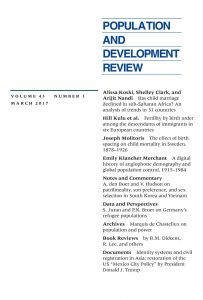Women, Sexuality, and the HPV Vaccine Part 3
In the past month, I have posted about the feminization of the Gardasil, the vaccine that prevents 70% of Human Papillomavirus (HPV)-related cervical cancers and 90% of genital warts. I started with the historical development and approval of the vaccine and continued with an examination of the research guiding girls-only vaccination strategies. In this post, I will conclude my discussion of Gardasil with some observations about the marketing and advertising of the vaccine, the continued focus on girls and women (despite approval for boys and men), and the messages aimed at women through these advertisements.
A number of researchers suggest that the marketing and advertising of Gardasil has been aimed at girls and women. The “One Less” campaign from the makers of Gardasil originally asked parents (well, really mothers) to help their daughters protect themselves against cervical cancer; their daughters would be “one less” to be affected by this disease. The makers of Gardasil now reach out the parents of sons, too, telling them they can help prevent HPV diseases in their sons. Still, scholars suggest that the marketing of Gardasil remains mostly targeted at girls and women. My own google image search confirms these findings. Of the first twenty one photos that appear using the search terms, “gardasil ads,” only two include or reference boys and men.
What I found most interesting about my own google image search was not the lack of advertising for boys and men. Clearly, the makers of Gardasil believe that girls and women are their target demographic and thus aim their advertising accordingly. Instead, I think the strategies and messages in the advertising aimed at girls and women are the more interesting observation.
There were two different types of ads that appeared in my search. The first type of ad focused around the protection of young girls. The makers of Gardasil imply that being a good parent means vaccinating your daughter and therefore protecting her from cervical cancer (an observation also made by Sociological Images). For example, one advertisement read, “How do you help your daughter become one less life affected by cervical cancer?” Another advertisement had a similar sentiment, stating “Your daughter can’t possibly know the importance of the cervical cancer vaccine, but thankfully, she has her mother.” This narrative of protectionism is not surprising. In other contexts, like sex education debates, the discourse about adolescent sexuality, and in particular, girls’ sexuality, reveals a desire to protect their “innocence.”
The other type of ad moves away from the narrative of protectionism and focuses on empowerment and choice. One ad stated, “I chose to get vaccinated after my doctor to me the facts” (emphasis in original). Another ad read, “I chose to get vaccinated because my dreams don’t include cervical cancer.” Instead of focusing on the ways in which girls and women can be protected, the ads suggest that girls and women need to protect themselves. It seems like the advertising department at Merck (the makers of Gardasil) recognize that they needed another strategy if they wanted to appeal to young women who feel empowered about their sex lives.
These two strategies are opposed to one another. One strategy suggests that girls and women need to be protected, while the other strategy relies on the ability of girls and women to be active and educated decision makers. Merck is tapping into two gendered narratives in order to sell to as many people as possible. This is, of course, the way that advertising works. But it does reveal the different, and sometimes contradictory, cultural ideas about women’s sexuality, ideas that advertisers will draw on in order to make a profit.
Suggested Readings:
Habel, Melissa A., Nicole Liddon, and Jo E. Stryker. 2009. “The HPV Vaccine: A Content Analysis of Online News Stories.” Journal of Women’s Health 18(3): 401-407.
Lorber, Judith. 1997. Gender and the Social Construction of Illness. Thousand Oaks: Sage.





1468-0491/asset/society_affiliation_image.gif?v=1&s=859caf337f44d9bf73120debe8a7ad67751a0209)
Thank you for writing about the HPV vaccine. On June 1, 2008 our 23 yr. old daughter Kristen died after a courageous year-long fight against HPV caused cervical cancer. My wife and I are very passionate about raising the visibility of HPV, cervical cancer screening, and the HPV vaccines. The vaccine would have led to a different outcome for Kristen.
This year more than 12,000 women will be diagnosed with cervical cancer in the United States. Almost 4,000 will die of this preventable disease.
The National Cancer Institute determined through a survey that only 20% of American women have heard of its link to cervical and several other cancers. Most people are not familiar with the DNA based HPV test like Roche’s cobas 4800 which can detect all of the dangerous HPV 16 and 18 strains. These strains will cause cervical cancer and aggressive oral cancers.
Many do not understand the importance of the HPV vaccinations made by Merck and GSK which will prevent HPV 16 and 18 infections. If you are under 26 you should talk to your doctor about getting a Pap test and vaccination. If you are 30 or older you can request an HPV test with your Pap test.
We are trying to prevent any more Kristen experiences.
For more info visit Kristen’s website at http://www.kristeneve.org.
Kirk Forbes